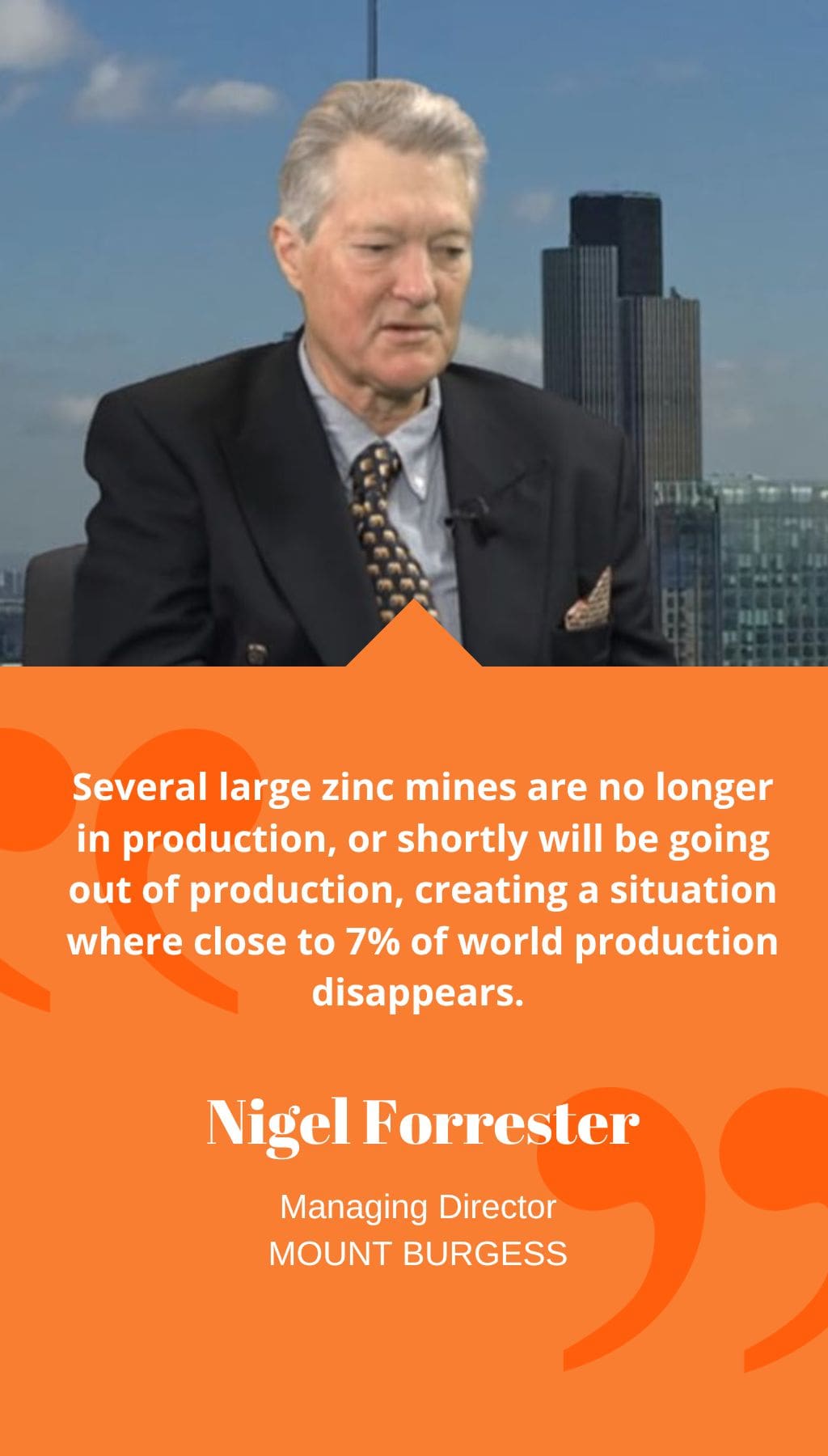
- Australia | 18 May 2017

Can you explain what makes the region where Mount Burgess’ Kihabe project is situated so prospective?
At Mount Burgess’ Kihabe project site, the company has secured an entire portion of a Neo-Proterozoic belt that contains zinc, lead, and silver. Currently, the company has developed resources of approximately 25 million tonnes (mt) at just over 3% zinc equivalent grade, which is divided into two deposits: the Kihabe and Nxuu deposits. The Nxuu deposit presents a potentially low risk path to early production at a modest capital investment due to its shallow, basin-shaped deposit with a maximum depth of about 60 meters and the mineralization being completely oxidized. Being totally oxidized enables the company to potentially produce zinc metal on-site through solvent extraction and electro-winning. The project also has the potential to produce both lead and silver on-site, which avoids a substantial cost and retains maximum value-add within the company and the Botswana economy.
What strategy does Mount Burgess have in place to bring its projects into production?
Mount Burgess intends to define a resource compliant with the 2012 JORC code by the end of this year. The 25 million mt resource is currently compliant with 2004 JORC standards. After defining a compliant resource, the company will complete an economic evaluation of the project and seek development funds. To achieve this, the company needs to conduct diamond core drilling because the current resources have been delineated mainly on reverse circulation drilling. From the diamond core drilling results, Mount Burgess expects to see a significant increment in the grade of both Nxuu and Kihabe deposits. This increase in grade will have a significant impact on the economics of the project, and the company needs to drill out the Nxuu resource to calculate it based entirely on diamond core grades.
What logistical advantages does the project enjoy?
Mount Burgess’ Kihabe project will be a low risk and low capital project due to the shallow deposit and the low waste to ore ratio at around 3:1. The company anticipates not having any geotechnical problems because the deposit will not have steep pit walls. The company intends a throughput of around 750,000 mt/y, which requires low Capex, making it a palatable investment hurdle for a junior explorer and shareholders. After completing the diamond core drilling, the company believes it will be in a position to move forward into doing the feasibility study. Mount Burgess is hoping to meet this guideline by around October or November of 2017.
What trends in the zinc price does Mount Burgess foresee, and what shifts does the company expect in global supply and demand?
We believe that there is potential for an increase in the zinc price, which is wavering at the moment and should be higher. Several large zinc mines are no longer in production, or shortly will be going out of production, creating a situation where close to 7% of world production disappears. At the same time, there is a 2.7-2.8% increment increase in world consumption per year. With all the global political turmoil at the moment, the company is seeing a lot of caution in the market. However, as the prices of both zinc and lead decline, the company is seeing a lot of stocks being bought at these lower prices.
What players in the zinc production marketplace have the greatest capacity to impact the global supply of zinc?
There are many warehouses, particularly in China, that are outside of the LME and the Shanghai Futures Exchange, and the company does not know what their stock levels are. We believe that stocks are going out of LME and going into unmonitored warehouses ready to make a turn. It is not a matter of supply and demand, but rather a calculated maneuvering of the market.














